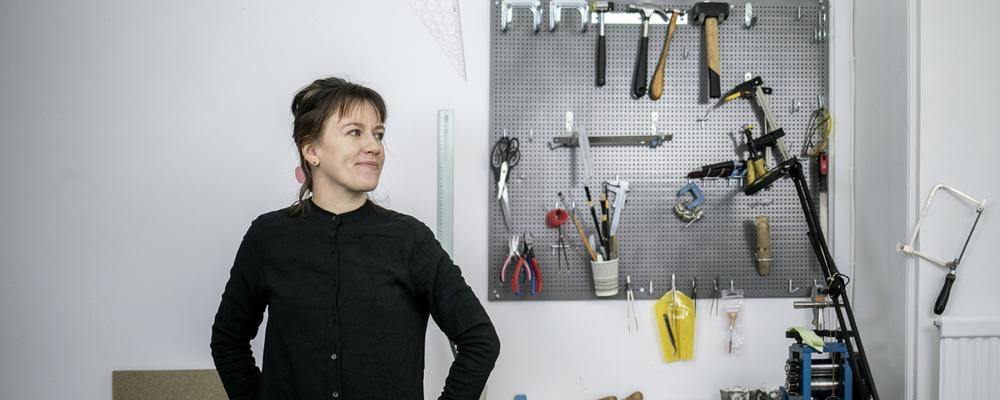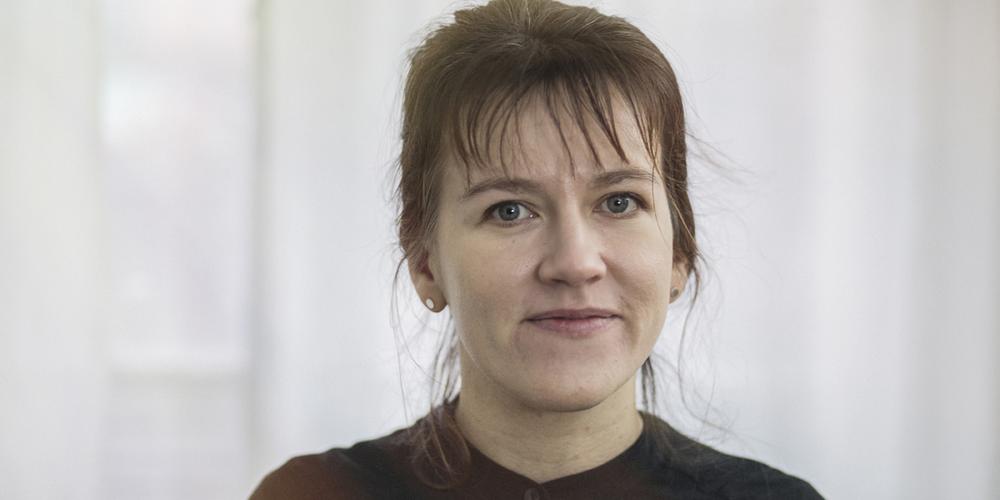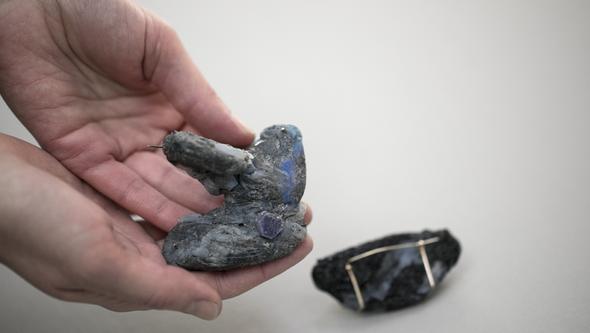
- Home
- News and events
- Find news
- In Jelizaveta’s jewellery art, it’s the material that creates the meaning
In Jelizaveta’s jewellery art, it’s the material that creates the meaning
For jewellery artist Jelizaveta Suska, the first encounter with HDK-Valand’s graduate programme was something of a culture shock. “I’m from Latvia, and I’m accustomed to teachers who say, ‘That’s wrong, do it over.’ Here instead I was given space to find my own artistic expression,” she says.
In Jelizaveta Suska’s jewellery art, it’s the material that creates the meaning – that tells a story or embodies a memory. When she’s working with magmas, for example, it’s about darkness, fear and phobias, while amber is part of her Russian heritage.
“It’s so strongly associated with the Soviet Union,” she explains. “I think about my grandmother and her generation, who all wore amber jewellery.”
Jelizaveta, or Liza as she’s known, grew up in the Latvian town of Jelgava as a member of the country’s Russian minority. As a child, she could never have imagined becoming a jewellery artist and living in Gothenburg. She was interested in art, and her mother, who was a pattern maker, was skilled at drawing. But Liza was also curious about biology and deeply fascinated by space.
“The first time I applied to art school, I didn’t get in, so instead I studied biology for a year,” she says. “But it wasn’t right for me, so I applied to art school again.”

This time it worked, and she chose metal design as a concentration. That choice was rather insignificant for Liza, who “just wanted to go to art school”. It was while she was living in Germany as an exchange student that she discovered conceptual jewellery art, and then everything fell into place.
“That’s when I fell in love with jewellery art,” she says. “That’s when I realised that it wasn’t just about making beautiful things – that I could also fill my jewellery with content.”
Liza decided that after completing her undergraduate degree she would pursue a master’s degree in jewellery art, preferably somewhere in the western part of Europe.
“There were a few schools that interested me, but ultimately I chose HDK-Valand mostly for practical reasons,” she explains, “like that the teaching was in English and that there were clear instructions for what I needed to do to apply.”

When she got settled in Gothenburg, however, life didn’t seem so clear any more. For Liza, who came from an educational culture that was completely different from the one at HDK-Valand, this first period was tumultuous.
“I was used to the teachers being more controlling and having to study a bunch of extra subjects apart from what I had chosen myself, like history and philosophy,” she says. “At HDK-Valand, I was able to devote myself to what I really wanted to do, and I had plenty of time to explore my art.”
Liza recalls that the freedom was confusing at first. It demanded both hard work and energy. But it also started her on the path to finding her very own style.
“It was in that environment that my experiments with crushed marble and melted glue got started,” she says. “Eventually, after a time as an exchange student in Japan, I also started including colour pigments. It was Japan that got me thinking about colour.”
She’s been working that way ever since. The result is usually a brooch. Liza describes her works as little landscapes and says they’re rooted in an image she’s carried with her since childhood: like Thumbelina, she is tiny and looks out from that perspective over the wide world around her.
“I think about what it would be like to land on my jewellery if I were so little – what there would be for me to explore,” she says. “That's why I’ve moved from flat surfaces to more active ones.”
This winter, Liza showed her work at the Gothenburg Museum of Art as one of the recipients of the Stena Foundation’s 2022 Culture Scholarship. She has previously been featured in successful exhibitions at galleries both in Sweden and abroad, including shows in Brazil, Belgium and Norway. Her work is also represented at the Nationalmuseum in Stockholm.
But what she wants most of all is for people to wear the things she creates, just as they do with more traditional jewellery.
“I guess that’s why I primarily make brooches and why I make them so small – comparatively small, at least,” says Liza. “So that people can have a little work of art close to their heart.”
By Camilla Adolfsson

